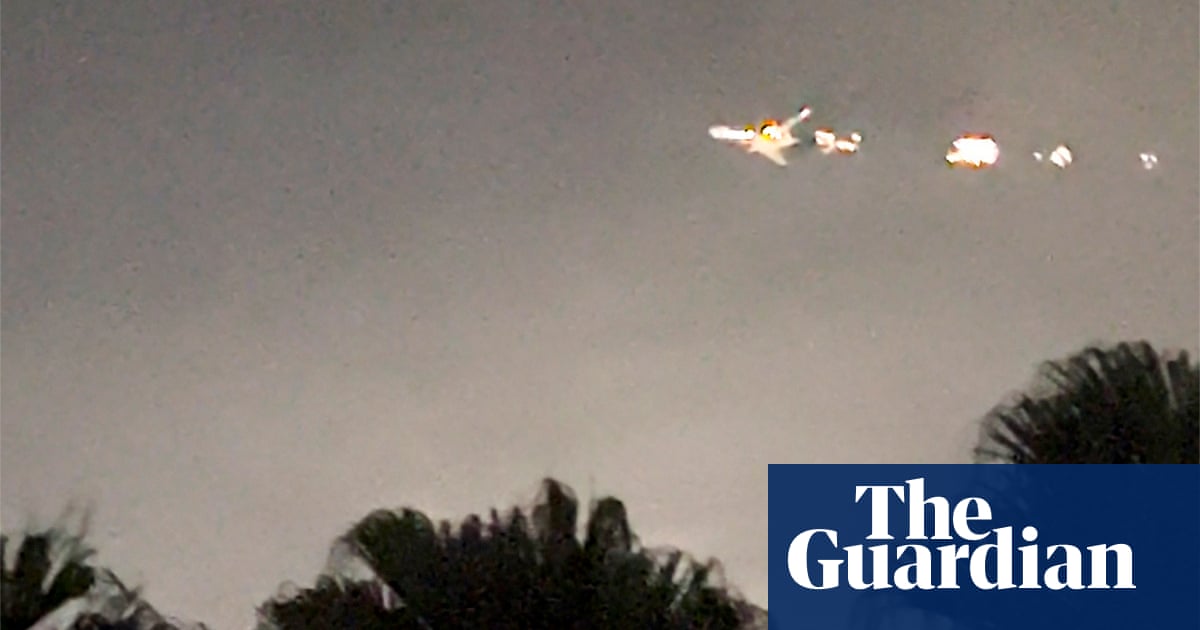A Boeing cargo airliner made an emergency landing in Florida on Thursday night after what its operator called “an engine malfunction” occurred shortly after takeoff, in the latest setback for the beleaguered company. A gaping hole where a paneled-over door had been at the fuselage plug area of Alaska Airlines Flight 1282 on Sunday 7 January 2024 Boeing opens factories to airlines and adds more checks after blowout Read more
Video taken by an eyewitness and posted to social media showed the 747-8 aircraft trailing flames and sparks from its left wing as it circled back to land at Miami international airport at about 10.30pm.
The operator, New York-based Atlas Air, said the plane “experienced an engine malfunction soon after departure”. Its crew of five “followed all standard procedures and safely returned” to the airport, it said in a statement, adding it would conduct a “thorough inspection to determine the cause”.
The Federal Aviation Administration (FAA) said on Friday it would be investigating the incident, adding that the eight-year-old Boeing 747-8 aircraft was heading for Puerto Rico. Its preliminary report stated that an inspection after the flight had landed revealed a “softball-sized hole” above one of its four engines, but did not specify when or how it occurred.
The plane, colloquially known as a jumbo jet, is equipped with four General Electric GEnx engines. The pilot reported a fire in the left wing engine closest to the fuselage, according to cockpit audio of the emergency call.



Definitely.
There’s various ways to do it. Most large aircraft have a tiny turbine engine in the tail called an Auxiliary Power Unit they can turn on to provide power and hydraulic pressure to control the plane in the event all engines are lost.
Even if they don’t have an APU available, all large aircraft have a Ram Air Turbine, which is basically a windmill that pops out of the fuselage. The RAT spins in the airstream, providing power and hydraulic pressure.
Read up on the “Gimli Glider” and “Cactus 1549” for two prominent examples of jets becoming gliders.